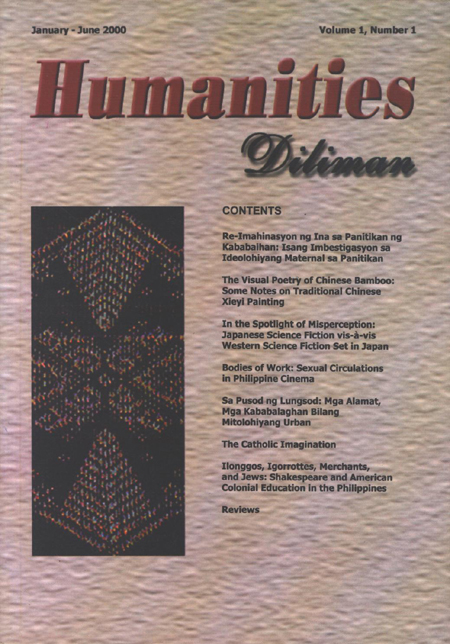The Visual Poetry of Chinese Bamboo: Some Notes on Traditional Chinese Xieyi Painting
Abstract
ExcerptChinese painting (Huo Hua) which dates back to the Han Dynasty (25 A.D.-135 A.D.) has two traditions: the Xieyi and the Gong Pi. Xieyi means "writing the meaning down" and its practitioners are literati artists who execute expressionistic and gestural strokes. Gong Pi painting is known for its application of colors and fine strokes. It is a naturalistic rendition of the subject that imitates the superficial likeness of the world. While Xieyi painting aims to capture the Qi or the vital spirit in the practice of painting and calligraphy,1 the naturalistic rendition of Gong Pi painting exhibits the dexterity of the artist. However, capturing the Qi is a more sophisticated preoccupation as far as the Chinese scholars of the classical times are concerned.
Xieyi painting is associated with literati paintings or the Wen Ren Hua practiced by scholars. It includes mainly landscapes, flora and fauna, human figures, and the Si Jun Zi Hua2 or the Four Noblemen Painting. In the Si Jun Zi Hua painting of the Bamboo, the different brushstrokes of Chinese calligraphy are applied.3 Unlike Gong Pi painting, which takes many days or weeks to finish,4 the Xieyi painting is finished in one sitting. A Xieyi painting is composed by the artist on the spot. The blank paper signifies Yin and the brush strokes signify Yang. To balance a composition is to achieve harmony and wholeness. A good composition is achieved when the spirit or the essence of the subject is captured with the masterful brush strokes and a good sense of balance in the composition.
In this paper, I will examine the history of Chinese literati painting, its materials, its tradition and milieu, the symbolism of its themes, and its practice in post-Cultural Revolution China.
Published
2007-02-28
How to Cite
MICLAT, Maningning C..
The Visual Poetry of Chinese Bamboo: Some Notes on Traditional Chinese Xieyi Painting.
Humanities Diliman: A Philippine Journal of Humanities, [S.l.], v. 1, n. 1, feb. 2007.
ISSN 2012-0788.
Available at: <https://journals.upd.edu.ph/index.php/humanitiesdiliman/article/view/10>. Date accessed: 03 sep. 2025.
Issue
Section
Articles


